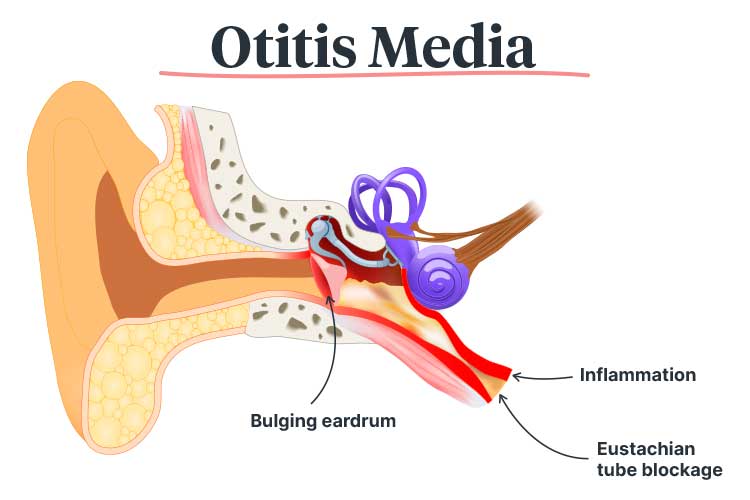Acute suppurative otitis media (ASOM) is a bacterial infection of the middle ear that causes pus accumulation and inflammation. When tympanostomy tubes are present, the condition may lead to persistent otorrhea (ear discharge), requiring specialized management to prevent complications.

Pathophysiology of ASOM with Tympanostomy Tubes
Tympanostomy tubes facilitate ventilation and drainage in patients with recurrent otitis media. However, bacterial pathogens can bypass normal immune defenses, leading to infection and pus formation in the middle ear.
Common Causative Pathogens
Several bacterial species are associated with ASOM in patients with tympanostomy tubes, including:
- Streptococcus pneumoniae: The most common cause of pediatric ear infections.
- Haemophilus influenzae: A frequent pathogen in upper respiratory infections.
- Moraxella catarrhalis: Produces beta-lactamase, leading to antibiotic resistance.
- Pseudomonas aeruginosa: A major cause of chronic otorrhea.
- Staphylococcus aureus: Can cause severe, recurrent infections.
Risk Factors
- Recurrent Otitis Media: Increases susceptibility to infections.
- Young Age: Children have shorter Eustachian tubes, promoting bacterial entry.
- Daycare Attendance: Higher exposure to pathogens in communal settings.
- Recent Upper Respiratory Infection: Increases bacterial colonization.
- Water Exposure: Contaminated water entering the tubes can lead to infection.
Clinical Symptoms
Patients with ASOM and tympanostomy tubes typically exhibit:
- Persistent Otorrhea: Purulent ear discharge lasting over 24 hours.
- Ear Pain and Pressure: Often mild due to the presence of tubes.
- Hearing Loss: Conductive hearing impairment from middle ear fluid.
- Fever and Irritability: More common in pediatric cases.
- Foul Odor from Ear Discharge: Indicative of bacterial overgrowth.
Diagnosis
1. Otoscopic Examination
- Identifies otorrhea and tympanostomy tube function.
- Detects tympanic membrane inflammation.
2. Microbiological Testing
- Culture and Sensitivity Testing: Identifies causative bacteria and antibiotic resistance patterns.
- PCR Testing: Detects specific pathogens when cultures are inconclusive.
3. Tympanometry
- Evaluates middle ear pressure and fluid presence.
4. Audiometry
- Assesses hearing loss severity.
Treatment Strategies
1. Topical Antibiotics
- Fluoroquinolones (Ciprofloxacin, Ofloxacin): First-line treatment.
- Aminoglycosides (Tobramycin, Gentamicin): Avoid prolonged use due to ototoxicity.
2. Oral Antibiotics (for Severe Cases)
- Amoxicillin-Clavulanate: Covers common pathogens.
- Cefdinir or Cefuroxime: Second-line options.
3. Ear Cleaning and Suctioning
- Removes infected material to improve medication efficacy.
4. Corticosteroid Drops
- Reduces inflammation in persistent infections.
5. Avoidance of Water Exposure
- Use earplugs while swimming to prevent contamination.
Prevention Strategies
- Routine Vaccination: Pneumococcal and H. influenzae vaccines reduce infection risk.
- Proper Tympanostomy Tube Care: Regular monitoring by an otolaryngologist.
- Hand Hygiene and Infection Control: Minimizes pathogen spread.
Prognosis and Complications
Most cases resolve with proper treatment, but untreated infections can lead to:
- Chronic Otorrhea
- Tympanosclerosis (Scarring of the Tympanic Membrane)
- Hearing Impairment
- Mastoiditis (Infection Spread to the Mastoid Bone)
Acute suppurative otitis media with tympanostomy tubes requires timely and targeted management to prevent complications. Topical and systemic antibiotic therapies, combined with proper ear hygiene and preventive measures, ensure successful treatment outcomes.